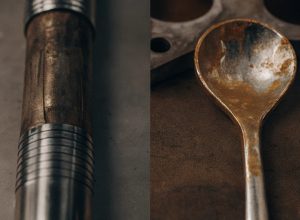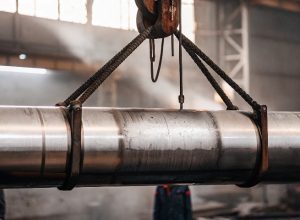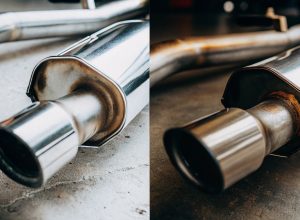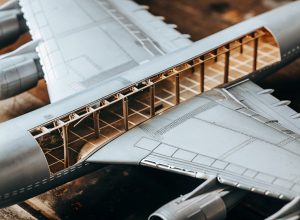Confused by titanium’s hype? Making the wrong material choice is expensive. Here’s an engineer’s simple guide to what titanium really means for your projects.
For manufacturing, titanium is a high-performance material valued for its incredible strength, light weight, and unmatched corrosion resistance. It is not just a metal; it’s a solution for problems where standard materials like steel or aluminum fail, especially in extreme environments.
I’ve spent my career working with this metal. I’ve seen it solve incredible challenges. But I’ve also seen people misunderstand its purpose. They ask why it isn’t used everywhere. It’s a great question, and it really comes down to understanding its specific jobs. So, what exactly are those jobs? Let’s look at where titanium truly shines in the real world.
What is titanium used for in manufacturing?
Unsure where titanium provides real value? Using it wrong is a costly mistake. Let’s look at the specific manufacturing applications where this amazing metal is simply irreplaceable.
Titanium is used to manufacture critical components that must be lightweight, strong, and corrosion-proof. Think of aircraft landing gear, chemical processing tanks, surgical implants, and marine hardware. These are applications where failure is not an option and performance justifies the cost.
I see titanium’s value every day in our plant. We don’t make simple parts. We create solutions for tough problems. A few years ago, a product manager like Lisa came to us from an aerospace company. They needed to reduce the weight of a plane’s hydraulic system without losing any strength. Steel was too heavy. Aluminum was not strong enough. We helped them switch to titanium tubing. The result? They cut 30 kilograms from the system. That is a huge fuel saving over the aircraft’s life. This is a perfect example of titanium’s job. It solves problems where the relación resistencia-peso1 is the most important factor.
Principales ámbitos de aplicación
Here’s a simple breakdown of where we see titanium used most often in my experience:
| Área de aplicación | Key Property Used | Example Component |
|---|---|---|
| Aeroespacial | Alta resistencia al peso | Landing gear, engine fan blades, hydraulic tubing |
| Médico | Biocompatibility, Corrosion Resistance | Hip implants, dental fixtures, surgical tools |
| Procesado químico | Extreme Corrosion Resistance | Heat exchangers, tanks, piping systems |
| Marina | Saltwater Corrosion Immunity | Propeller shafts, underwater sensors, submersibles |
This table shows it clearly. Each use case leverages a specific property that other metals just cannot match. When a customer asks for titanium, they are usually dealing with a problem in one of these four areas.
Which industries require titanium?
Want to know which industries are the biggest buyers of titanium? Targeting the wrong market is a waste of resources. Let’s focus on the key sectors that truly need it.
The primary industries requiring titanium are aerospace, medical, chemical processing, and marine. These sectors have demanding applications where performance, reliability, and extreme material properties are non-negotiable. About 80% of our high-grade titanium2 goes to these four areas.
At our plant in Baoji, we see the global demand firsthand. Around 80% of our titanium exports are for customers in just a few key industries. This is not a coincidence. These industries face challenges that titanium is uniquely equipped to solve. For a product manager like Lisa, knowing these industries is key to understanding the market.
Aeroespacial y defensa
Here, every gram matters. Lighter planes use less fuel and can carry more payload. Titanium offers the strength of steel at about half the weight. This makes it essential for airframes, engines, and landing gear where stress and temperature are high.
Medical Sector
The human body is a harsh environment. Most metals corrode inside it. Titanium is biocompatible, which means our bodies don’t reject it. It also resists corrosion from body fluids. That is why it is the top choice for hip and knee implants, pacemakers, and dental screws.
Chemical and Marine Industries
These sectors deal with highly corrosive substances, from industrial acids to saltwater. Stainless steel can handle a lot, but for things like chlorine, sulfuric acid, or constant saltwater exposure, it will eventually fail. Titanium is almost completely immune to this kind of corrosion. This prevents leaks, extends equipment life, and ensures safety in plants and at sea.
Why don’t we use titanium instead of steel?
If titanium is so great, why isn’t everything made from it? Assuming it can replace steel everywhere is a huge financial mistake. Here is the simple, practical reason why.
The main reason we don’t use titanium instead of steel is cost. Raw titanium and the process to turn it into a final product are significantly more expensive. Steel provides good performance for most applications at a fraction of the price. Titanium is reserved for when steel fails.
Lisa, this is a question I get all the time, especially from people in sales and management. The answer is almost always about economics. In my experience, a commercially pure titanium bar can be five to eight times more expensive than a similar bar of 304 stainless steel. Why such a big difference? It starts with the raw material and continues all the way through manufacturing. Steel is abundant and easy to process. Titanium requires complex, energy-intensive steps to refine and shape, which I’ll explain next.
Quick Cost-Benefit Look
This is how I explain it to product managers to help them decide. I suggest they ask "Is ‘good enough’ truly good enough?"
| Característica | Stainless Steel (e.g., 304) | Titanium (e.g., Grade 2) |
|---|---|---|
| Coste relativo | Low (1x) | High (5-8x) |
| Fuerza-peso | Bien | Excelente |
| Resistencia a la corrosión | Bien | Excepcional |
| Best Use Case | General purpose, structural, food processing | Critical applications where weight or corrosion are limiting factors |
You only pay the premium for titanium when steel’s "good" performance is not good enough for the job. For 95% of applications, steel is the right financial and engineering choice. You choose titanium for the other 5%, where failure is too costly.
Why is titanium hard to manufacture?
Heard that titanium is a difficult metal to machine and forge? Ignoring these challenges leads to production delays and scrapped parts. Here are the key reasons why it is so tough.
Titanium has a very high melting point3 and reacts with oxygen at high temperatures. This means it must be melted in a vacuum and is difficult to cast and weld. It also work-hardens quickly, making machining a slow and tool-intensive process.
This is where my work as an R&D engineer really begins. The challenges with titanium are real, and overcoming them is our daily job. These difficulties directly contribute to its higher cost.
1. Reactivity with Oxygen
When titanium gets hot, it loves to absorb oxygen from the air. This makes the metal brittle and useless. So, we cannot just melt it in an open furnace like steel. All melting, and even some welding, must be done in a vacuum or an inert argon gas environment. This requires special, expensive equipment like Vacuum Arc Remelting (VAR) furnaces.
2. High Melting Point
Titanium melts at a very high temperature, over 1,668°C (3,034°F). This requires a huge amount of energy. It also makes finding materials for the crucibles that hold the molten titanium very difficult.
3. Machining Difficulty
Titanium is not as hard as some steels, but it is "gummy" and dissipates heat poorly. When you try to cut it, the heat builds up on the cutting tool, causing it to wear out very fast. We have to use slow speeds, high-pressure coolant, and very rigid machines. It makes the entire process much slower and more costly than machining steel or aluminum. This adds significant cost to any finished titanium part.
Conclusión
Titanium is a powerful but costly material for critical industries. Its manufacturing challenges explain its price and why it’s chosen only when other metals like steel won’t do the job.













